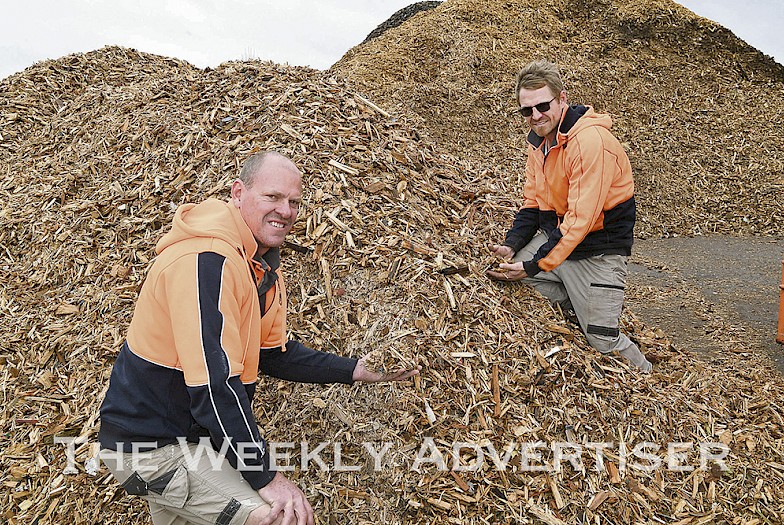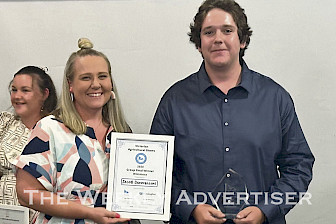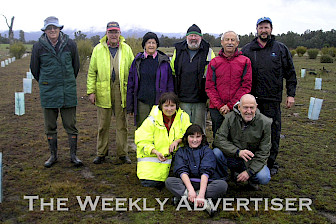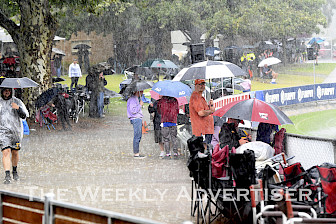The pallets have undergone processing through an industrial shredder at the company’s material-recovery facility in Horsham South.
Now, as a result of the company’s exhaustive and continuous exploration into finding new recycled-commodity markets, 150 cubic-metres of the end product is now on its way to Colac district dairy farms every week.
Company owner-director Daryl Hobbs said the primary use for the chipped pallets was for footing for livestock and also groundcover for Horsham district residential properties.
“The product is subject to extensive quality-assurance protocols,” he said.
“It’s all hand-picked, all nails removed and completely free of contamination.
“We’re receiving wooden pallets all the time, from local businesses as well, and hopefully we’ll get more from the start of the proposed next stage of the wind farm – which we think might not be too far way.
“It’s a great and innovative outcome from a waste-recovery perspective.
“We can’t simply keep burying everything. This is what our business is trying to achieve.
“It’s about identifying whatever commodity we can pull out of the waste stream and finding a new use and market for it. But it is a tough process.
“There are always things to consider. For example, we can only accept ‘clean’ waste-timber packaging or pallets that are free of chemical treatment in this latest project.”
Westonvic Waste, in running a waste-recovery centre for the past four years, collects a combination of construction and household waste.
Apart from timber, it recovers bricks and concrete, plastics, glass, steel and plasterboard.
About 80 percent of construction waste is recycled and 20 percent goes to landfill.
Mr Hobbs said society continued to face a waste-management dilemma, especially with severely depressed recycling plastics and cardboard markets and increased Environment Protection Authority levies and other associated costs.
Potential
Mr Hobbs said placing greater emphasis on evolving energy-from-waste burning technology, already in use around the world and appropriate for a variety of applications, would be a productive step.
“In working at the coalface of the waste-recovery industry it has never been clearer to someone like me that Australia should be seriously pursuing energy-from-waste production,” he said.
“The reality is that there is all sorts of potential involving this, not only for Australia and Victoria but for regional areas such as the Wimmera.
“But at the moment, when it comes to research and development, especially in finding markets, relatively small operators like us usually have to do it all ourselves.”
Member for Lowan Emma Kealy said in December last year, while promoting a Victorian Opposition Zero to Landfill policy, that waste-management might represent regional opportunity based on a combination of energy-from-waste technology with market-driven recycling.
The entire June 24, 2020 edition of The Weekly Advertiser is available online. READ IT HERE!
The entire June 24, 2020 edition of AgLife is available online. READ IT HERE!






